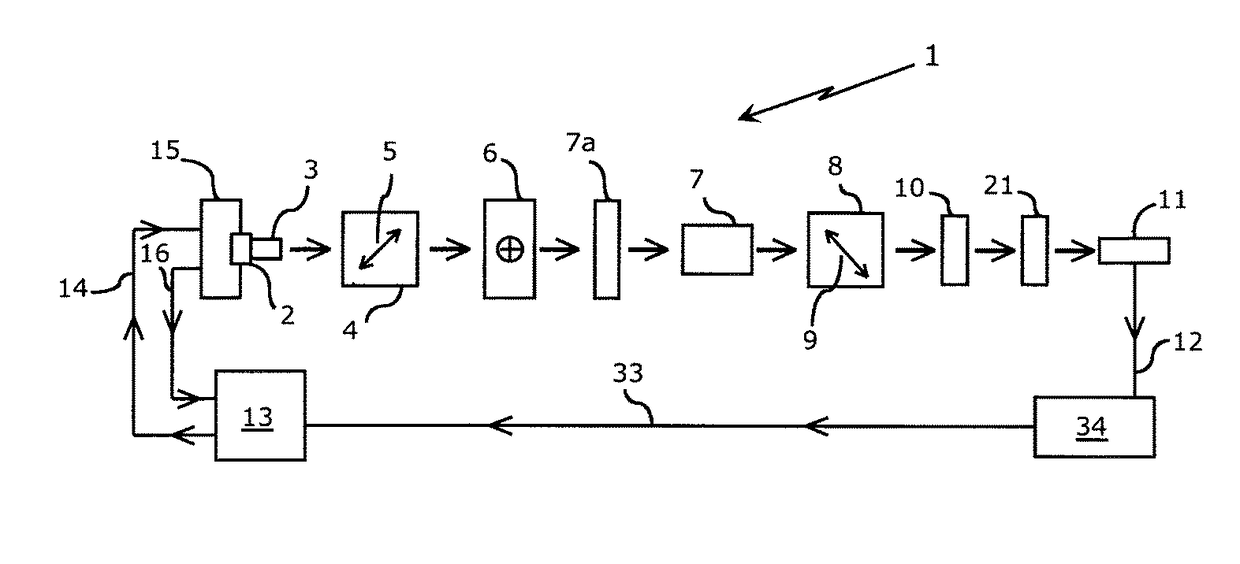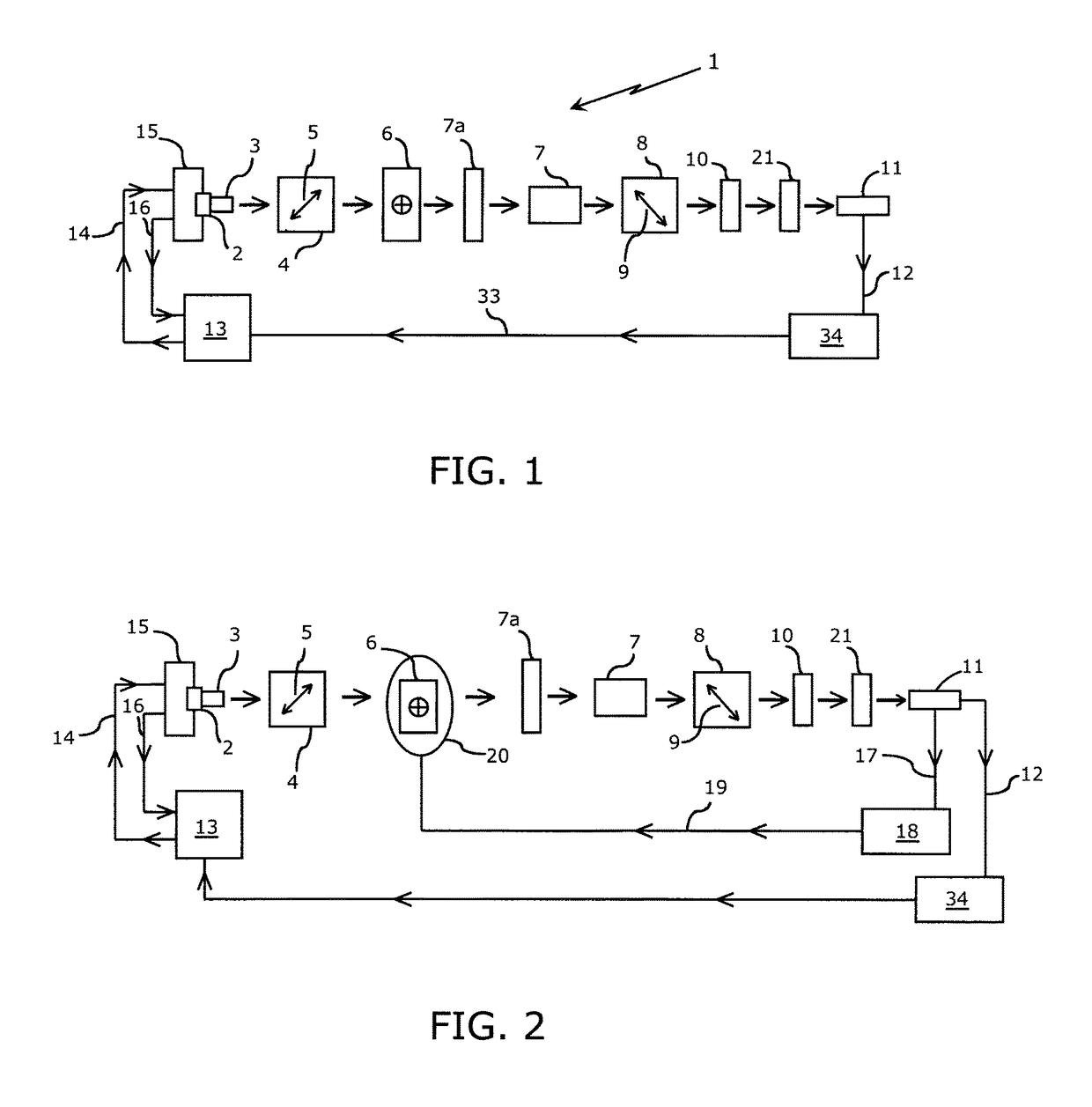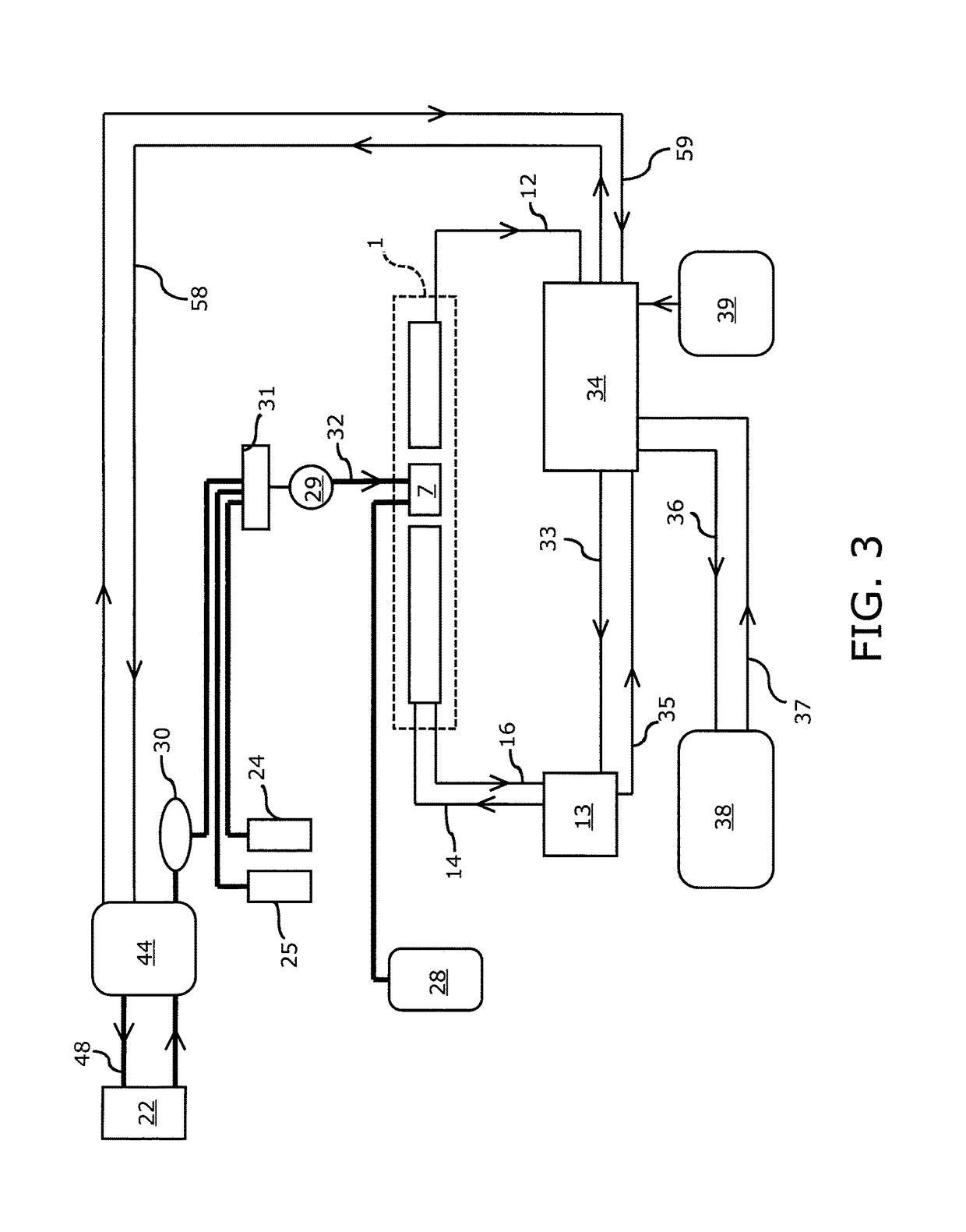Method and apparatus for automated measurement of chiral analyte concentration
a technology of chiral analytes and automated measurement, which is applied in the field of physiological analytes measurement, can solve the problems of insufficient accuracy of procedures, limited space and personnel available for monitoring patients, and inability to accurately measure concentration, etc., and achieves the effects of convenient and reliable measurement, accurate measurement, and convenient monitoring
- Summary
- Abstract
- Description
- Claims
- Application Information
AI Technical Summary
Benefits of technology
Problems solved by technology
Method used
Image
Examples
Embodiment Construction
[0051]In one embodiment of the proposed device, light from a monochromatic source, such as an LED or laser diode, is collimated and polarized. This light beam is passed through a retarder and subsequently through a high quality optical quartz glass flow cell through which the sample ultrafiltrate, calibration standard or flush solvent are drawn by the device's pump and manifold system. The light emanating from the measurement flow cell is routed through the analyzer, and optionally through a focusing lens and / or bandpass filter of known wavelength, before it is directed onto the detector.
[0052]Referring to FIG. 1, a monochromatic light source (laser diode or light emitting diode) 2 is shown, the output of which is collimated by an optical component 3 (if needed) and transmitted to a polarizer 4. Applicant has found that the utilization of a 10 mW, 635 nm laser diode having an integrated, internal beam corrected optic is suitable. Double ended arrow 5 indicates the direction of polar...
PUM
| Property | Measurement | Unit |
|---|---|---|
| concentrations | aaaaa | aaaaa |
| concentrations | aaaaa | aaaaa |
| wavelength | aaaaa | aaaaa |
Abstract
Description
Claims
Application Information
 Login to View More
Login to View More - R&D
- Intellectual Property
- Life Sciences
- Materials
- Tech Scout
- Unparalleled Data Quality
- Higher Quality Content
- 60% Fewer Hallucinations
Browse by: Latest US Patents, China's latest patents, Technical Efficacy Thesaurus, Application Domain, Technology Topic, Popular Technical Reports.
© 2025 PatSnap. All rights reserved.Legal|Privacy policy|Modern Slavery Act Transparency Statement|Sitemap|About US| Contact US: help@patsnap.com



